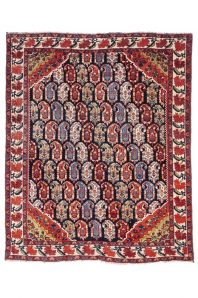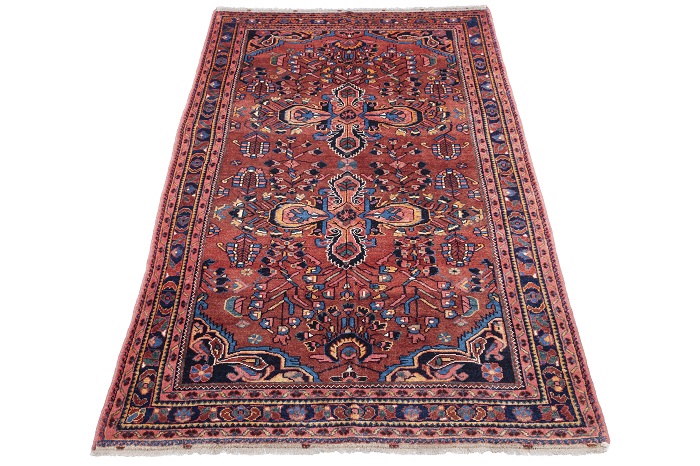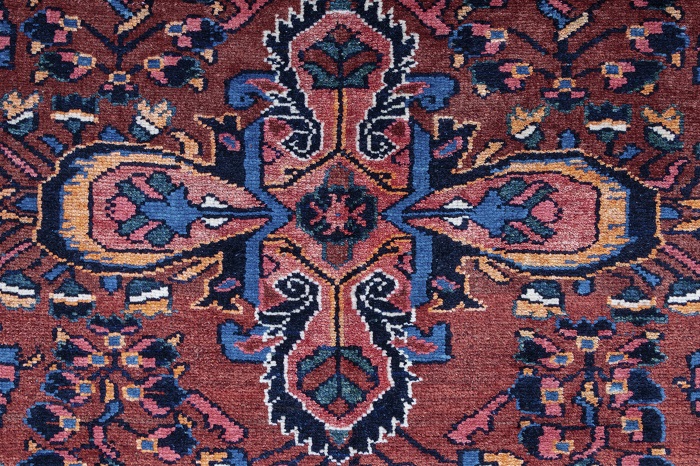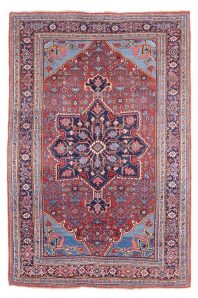Lilihan rugs are tribal Persian rugs made by nomadic Kurdish people of Markazi province, in western Iran. These people are descendants of the Kurds, and their weaving styles and designs are incredibly similar to theirs. The rugs are more than often characterized by the bright and lively colors that they incorporate. The Lilihan carpets often have traditional floral patterns, but geometric ones are also seen. Lilihan was formerly the collection point for Armenian single wefted rugs made in the vicinity of Khomeine. Although not too well known in Europe, Lilihan rugs are extremely popular in the United States. These lush, attractive, and extremely durable wool rugs are similar in style, color, and thickness to Sarouks, but are made with a single weft construction and tend to have a longer pile. Lilihan rugs are beautifully woven in the Hamadan. Lilihan rugs are easy to distinguish since there is only one shot of weft between each row of knots. Although the designs on Lilihan rugs are characteristically curvilinear, geometric patterns are also evident. Traditional floral patterns often feature very unusual and striking colors – wefts of pink, Lilihan rugs frequently are woven with the Herati design, Boteh design (named for the Farsi word for immature flower or palm leaf), or Gul Hannai design (leaves/vines). The foundation of Lilihan rugs is typically cotton and the pile wool, usually coming from the villager’s own sheeps wool.









Reviews
There are no reviews yet.